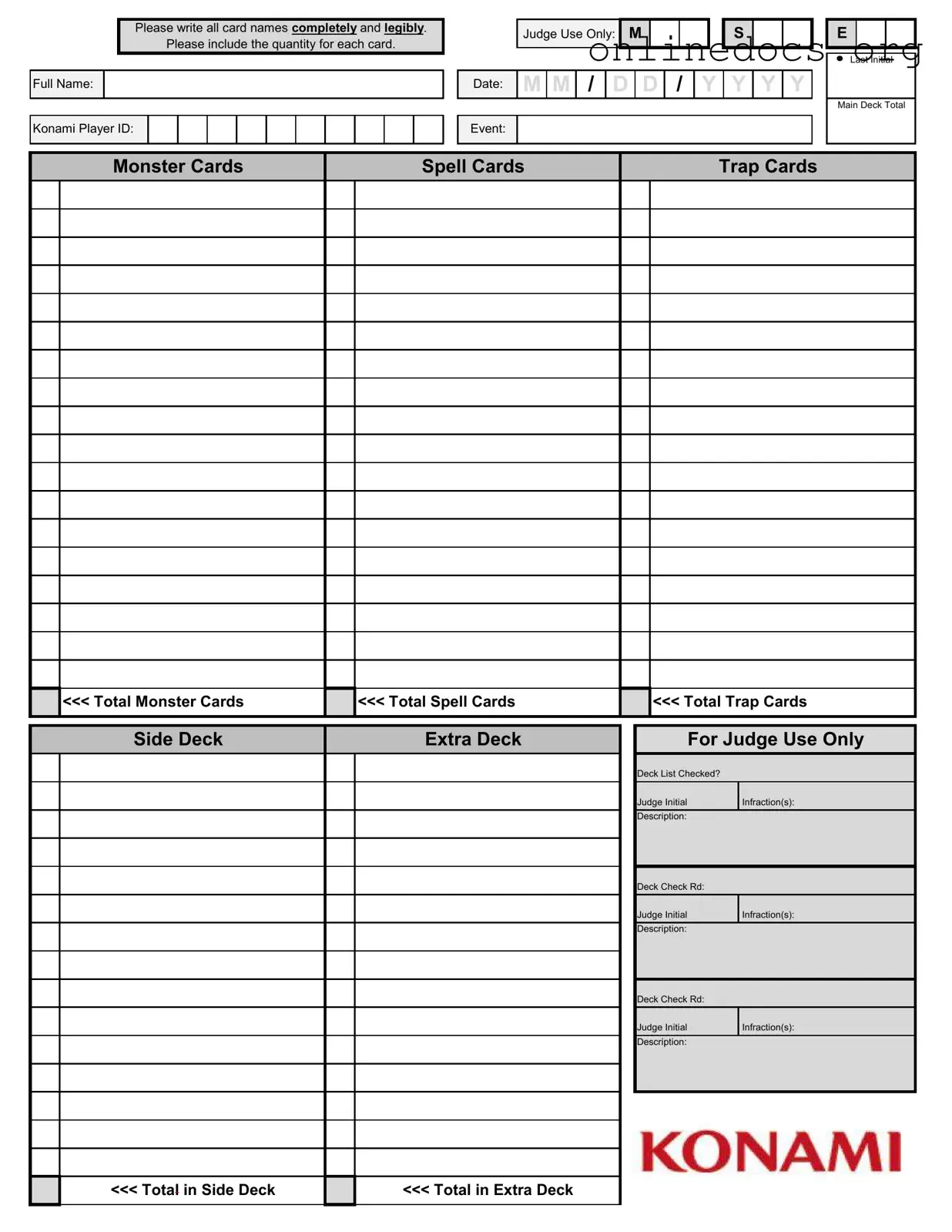The Magic: The Gathering Decklist form serves a similar purpose as the Konami Decklist form. Both documents require players to list their card names clearly and indicate the quantity of each card. They are used during organized play events to ensure compliance with game rules. Additionally, both forms include sections for player identification, such as name and player ID, facilitating easy tracking of participants and their decks. The structure of these forms promotes clarity and organization, making it easier for judges to review and verify deck legality.
The Pokémon Trading Card Game Decklist is another document that mirrors the Konami Decklist form. Like the Konami form, it requires players to provide a complete list of cards along with their quantities. This ensures that all players adhere to the game’s regulations and restrictions. The Pokémon Decklist also includes sections for player identification and event details, similar to those found in the Konami form. The emphasis on legibility and completeness in both forms helps maintain the integrity of competitive play.
In Texas, the importance of having a well-documented transaction is evident when it comes to selling recreational vehicles, as a Texas RV Bill of Sale serves to protect both the buyer and seller in this process. This document ensures that there is a clear record of ownership transfer, making it an indispensable part of any RV sale. To avoid any ambiguities in such transactions, interested parties can refer to resources like legalformspdf.com, which provides templates and guidance for creating proper legal documentation.
The Yu-Gi-Oh! Tournament Registration form is akin to the Konami Decklist in that it collects essential player information and deck details. While the primary focus of the Tournament Registration form is on participant data, it often requires players to confirm their deck choices, similar to how the Konami form lists card specifics. Both documents play a critical role in the organization of competitive events, ensuring that all necessary information is gathered efficiently.
The Cardfight!! Vanguard Decklist form shares similarities with the Konami Decklist form, particularly in its requirement for players to list card names and quantities. This document is essential for maintaining the integrity of the game during tournaments. Both forms include sections for player identification and event details, allowing judges to easily verify compliance with the game’s rules. The structured format of each document aids in the quick assessment of a player’s deck.
The Vanguard Tournament Registration form also resembles the Konami Decklist. While its primary purpose is to gather participant information, it often requires players to declare their decks, similar to the Konami form. This helps ensure that all players are competing with legal decks. The inclusion of player identification details in both forms streamlines the registration process, contributing to the overall efficiency of tournament operations.
The Flesh and Blood Decklist form is another document that aligns closely with the Konami Decklist. Players must provide a complete list of cards and their respective quantities. This helps ensure adherence to the game’s rules and regulations during competitive events. Both forms emphasize clarity and organization, which are crucial for judges when reviewing decks. The structure of the Flesh and Blood Decklist promotes a straightforward process for both players and event officials.
Finally, the KeyForge Decklist form is similar to the Konami Decklist in that it requires players to list their cards and quantities. This document is vital for maintaining the integrity of KeyForge tournaments. Both forms facilitate the collection of player information and deck details, allowing for efficient verification by judges. The emphasis on legibility and completeness in each document helps uphold fair play standards within the gaming community.
